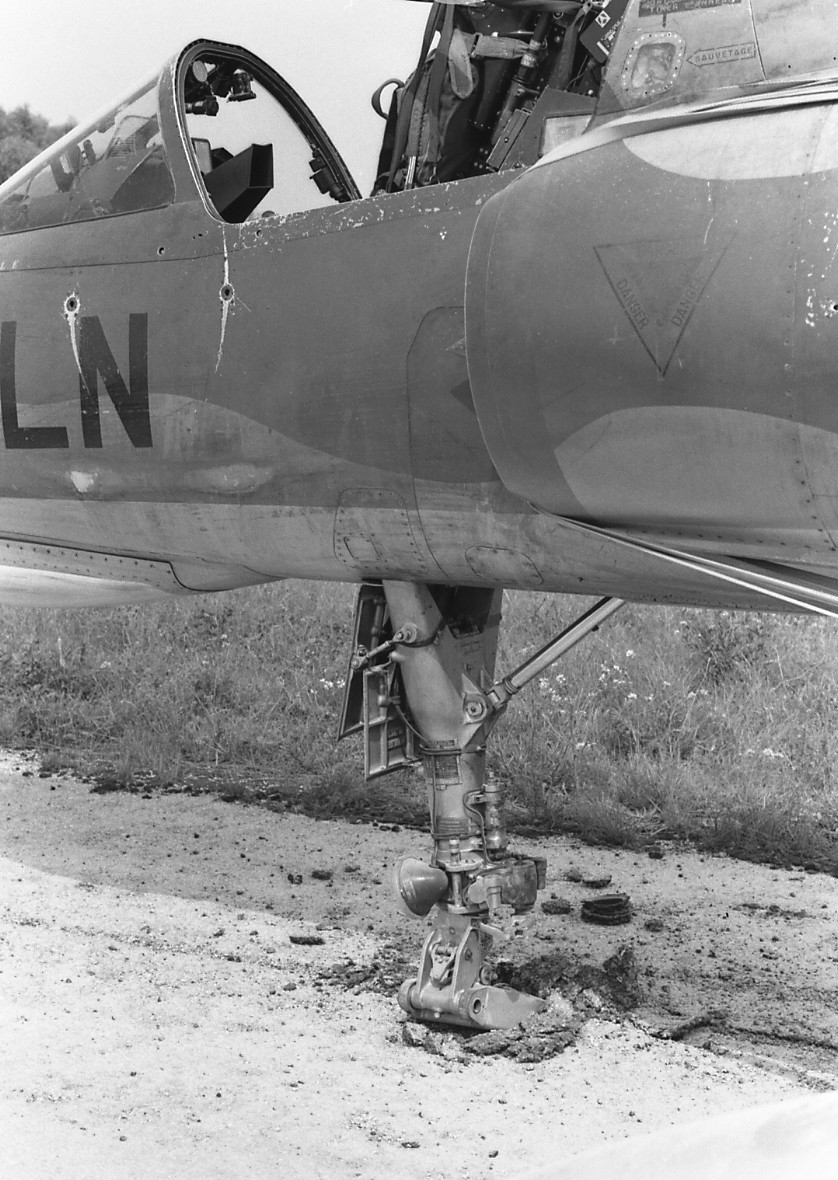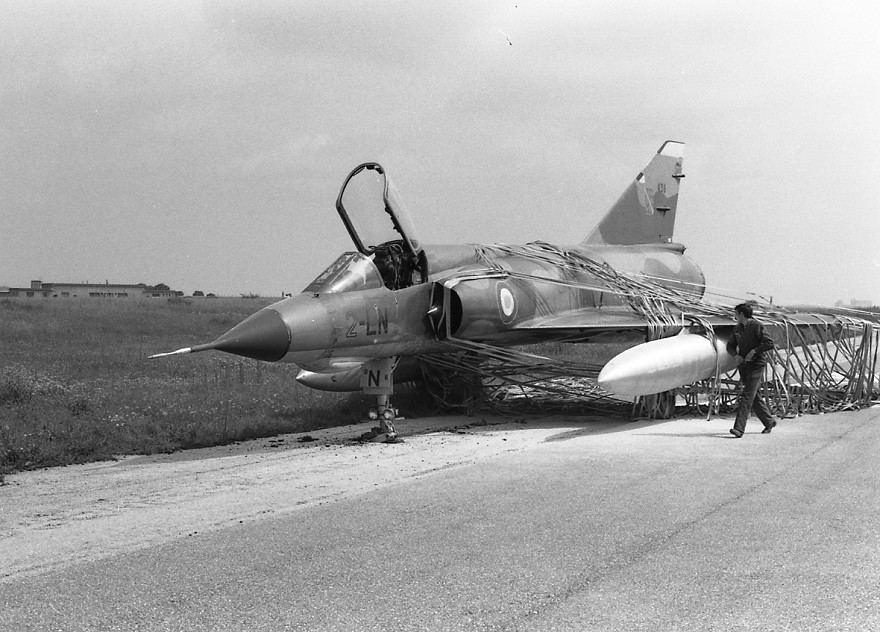Here are some pictures of what happened in Dijon at the beginning of a sunny Friday afternoon during the Spring of 1977.
Two Mirage IIIE's belonging to Escadron de Chasse 3/2 "Alsace" had been fitted with 1700 litre drop tanks to practice low altitude navigation in Northern Germany; as far as I remember, air to ground gunnery at Hechteren in the Netherlands was scheduled too.
These 1700 litre drop tanks were very unusual in Dijon; our planes performed mostly air defence missions, and therefore the 1700 litre tanks (dubbed "Grosse Couilles" in French, i.e. "Big Testicles", or whatever you call it in a more imaged language) were very unusual indeed. Most of the time they were used by some high ranking Staff Officers who had to perform their 30 hours yearly allocation in order to keep their flying bonus. Some of those guys preferred to make high altitude navigations of 2½ hours duration just to burn some petrol.
Just for the sake of memory, this configuration was called "6-Bravo". In the Mirage III, configuration was indicated by a combination of figures and letters. Figures indicated the armament, and letters indicated the petrol layout. Here are some examples:
Armament:
6 : 30 mm DEFA guns
7 : AIM-9 Sidewinder
8 : Matra 550 Magic
11 : Matra 530
Petrol:
Alpha : no underwing tanks, internal petrol only
Bravo : 1700 litre tanks
Echo : 500 litre supersonic tanks
Golf : SEPR 844 rocket engine
Hotel : 625 litre tanks
Juliet : 1300 litre tanks
Zulu : leading edge tanks (for those planes that were fitted with L.E. tanks, I don't remember with which serial N° this started, somewhere in the 450+)
So, for instance, a plane flying in "6+8-Echo Zulu" would have guns, Magic missiles, 500 litre tanks and leading edge tanks too. A plane flying in "11-Golf" would have the rocket engine and the Matra 530 missile but no guns (it was not possible to fly with both the rocket engine and the guns, anyways, as I had explained in one of my earlier postings). A "Pure Alpha" would be an unarmed plane flying on internal petrol only – this configuration was used mainly to perform aerobatic displays.
Now let's return to what happened on that Friday afternoon. The two-ship formation was manned by two very experienced pilots. The leader was Capitaine Henri de Waubert de Genlis, who was at the time one of the two Flight Commanders of EC 3/2 and who later became a test pilot, and the wingman was Sergent-Chef Prime Martin, who was the official Air Force display pilot for the Mirage IIIE.
The leader took off without problem, but the wingman suffered a nosewheel tire blow just before rotation. As the procedures implied, he then aborted his take-off and went to finish into the crash barreer, as the accompanying pictures show. This was quite a hairy manoeuvre because of the very high take-off weight in this configuration, but Prime made a sterling job as usual and he managed to maintain the aircraft in line down to the very last moment.
So the plane went to a halt in the position shown and nobody was hurt. Yet, this was the beginning of some very serious problems! Quite obviously, with a plane into the crash barreer, Dijon's 18/36 Runway was unusable. The other runway (02/20) was not suitable for landing a Mirage. So, the airborne leader probably would have to divert to an alternate, such as Luxeuil, 60 NM away. That would have been a normal procedure.
BUT!!!! But remember, we were on a Friday afternoon; on that Friday night Henri de Waubert was organizing a big party at his place. Henri's parties were well known in the Air Force, there was plenty of people invited, including some Generals coming from Paris.
Therefore, diverting to Luxeuil was out of question, he HAD to land in Dijon, and the runway had to be cleared as soon as possible. Flight time for the airborne aircraft was approximately 2½ hours, so things were feasible. Except for one slight problem: a Mirage III with full 1700 litre drop tanks could not be hoisted by a crane. Tanks had to be drained first, otherwise there was a risk of the main wingspar bending.
So the tanks had to be drained into a refuelling truck. The idea sounds simple, doesn't it? Yes, but refuelling trucks on an air base are intended to refuel aircraft, and not the contrary. So all available trucks were full, obviously. And a truck had to be drained prior to draining the airplane itself, and so on. Quite a complicated task…
Nevertheless the engineers managed to do everything in time, Henri de Waubert cruised at the most economic speed possible, the runway was cleared and he could land at the opposite QFU without any further trouble.
The party was very successful!
Best regards,
Michel
http://www.mirage4fs.com/m_gerard_new.html
[]s










